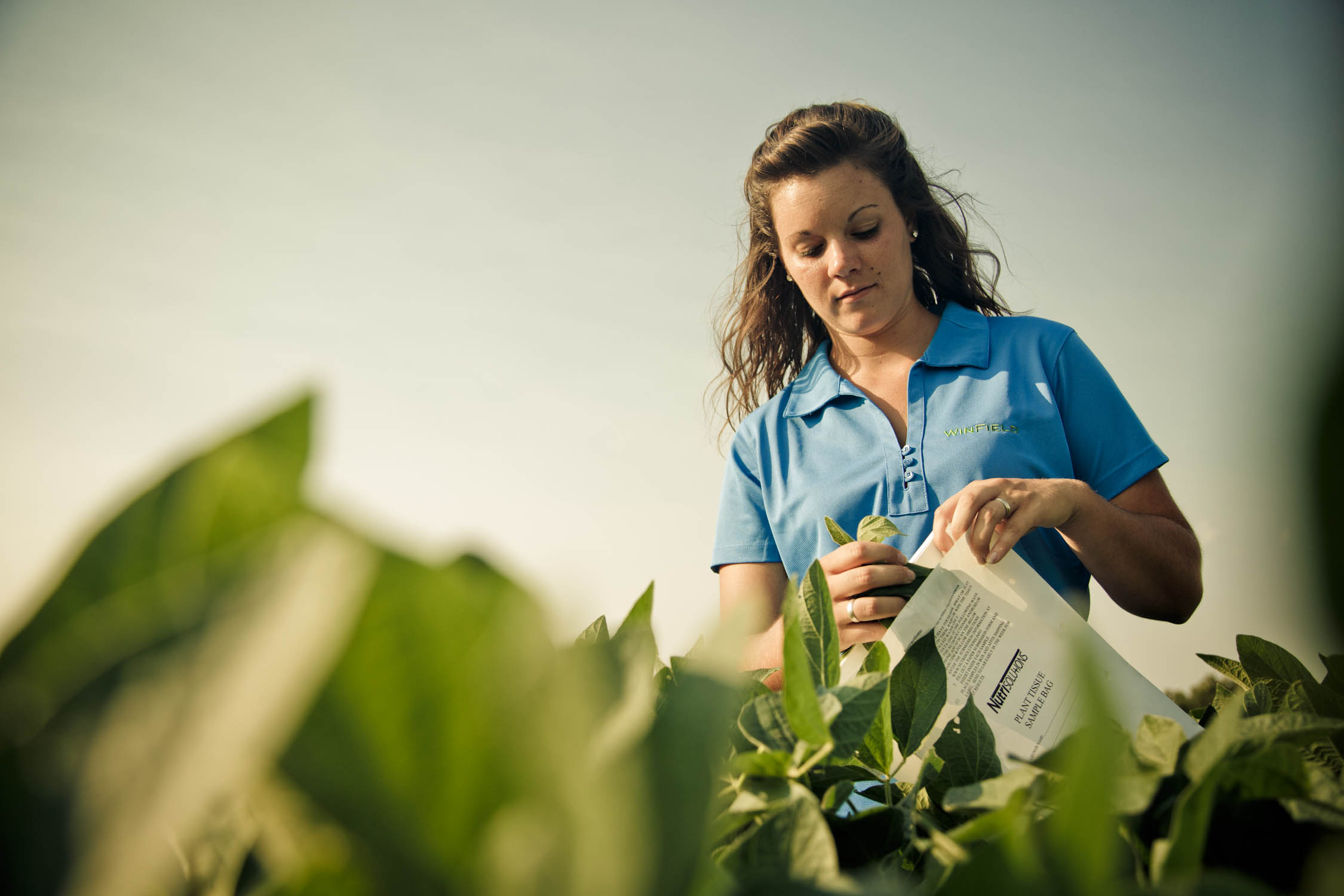Use Tissue Sampling Data to Drive Fertilizer Decisions

You’ve taken the time and effort to tissue sample your fields, and the results are in. Do you know what the numbers mean and how to use them to make decisions? Contrary to what you might believe, the sampling report is not a stand-alone diagnostic tool. It’s a starting point to help you understand plant health, and when combined with soil sampling and field observations, it can drive management decisions to improve yield.
What’s the Limiting Factor?
You may have heard your agronomist talk about Liebig’s Law of the Minimum. This is a principle that states crop growth is controlled by the scarcest resource available. This means that crop yield will only be as good as the most limiting nutrient.
Use your tissue sampling results as a basis for understanding which nutrients may be limiting your crops from reaching full yield potential.
Understanding the Numbers
Your sampling report will indicate the concentration of each reported nutrient in the tissue sample analyzed, along with a normal value comparison range. A recommendation for action will be included for nutrients that fall below acceptable values.
Review the sampling report and recommendations with your agronomist, and keep in mind that results are based on a snapshot in time when the sample was taken. Crops use nutrients differently at different growth stages. For example, corn plants use most of the available nitrogen between the 8-leaf stage and tasseling, as they grow rapidly and prepare to set grain. If sampling before this growth stage reveals a deficiency in plant nitrogen, you may still have time in-season to correct the deficiency and could avoid yield loss.
Farmers see the value of using tissue sampling as a proactive approach to crop nutrient management. Over 92,000 tissue samples from various crops were analyzed in 2016 as part of WinField United’s NutriSolutions 360® system. Nationwide plant nutrition trends were recently summarized by crop, and results can be found here.
Use Data to Drive Decisions
Multiple data points gathered throughout the season, and over multiple years, can help you understand how your plants are using nutrients and drive fertilizer product choices and application timing. Crop rotation, seed choices, and management practices can have an effect on nutrient availability over time, and it’s easier to see how those choices affect crop nutrition when you have more data to analyze.
Reviewing trends over time can also help you understand other agronomic issues that may be reducing your yield. For example, if you notice specific fields or areas where plants consistently lack nitrogen, it could indicate poor drainage, poor soil quality, or compaction problems. There may be management steps you can take to remedy the problem and increase fertility in your crops. Tissue sampling results give you an idea of plant nutrient status, but it’s ultimately up to you to investigate your fields and put that information to good use to increase yield.
What’s the Limiting Factor?
You may have heard your agronomist talk about Liebig’s Law of the Minimum. This is a principle that states crop growth is controlled by the scarcest resource available. This means that crop yield will only be as good as the most limiting nutrient.
Use your tissue sampling results as a basis for understanding which nutrients may be limiting your crops from reaching full yield potential.
Understanding the Numbers
Your sampling report will indicate the concentration of each reported nutrient in the tissue sample analyzed, along with a normal value comparison range. A recommendation for action will be included for nutrients that fall below acceptable values.
Review the sampling report and recommendations with your agronomist, and keep in mind that results are based on a snapshot in time when the sample was taken. Crops use nutrients differently at different growth stages. For example, corn plants use most of the available nitrogen between the 8-leaf stage and tasseling, as they grow rapidly and prepare to set grain. If sampling before this growth stage reveals a deficiency in plant nitrogen, you may still have time in-season to correct the deficiency and could avoid yield loss.
Farmers see the value of using tissue sampling as a proactive approach to crop nutrient management. Over 92,000 tissue samples from various crops were analyzed in 2016 as part of WinField United’s NutriSolutions 360® system. Nationwide plant nutrition trends were recently summarized by crop, and results can be found here.
Use Data to Drive Decisions
Multiple data points gathered throughout the season, and over multiple years, can help you understand how your plants are using nutrients and drive fertilizer product choices and application timing. Crop rotation, seed choices, and management practices can have an effect on nutrient availability over time, and it’s easier to see how those choices affect crop nutrition when you have more data to analyze.
Reviewing trends over time can also help you understand other agronomic issues that may be reducing your yield. For example, if you notice specific fields or areas where plants consistently lack nitrogen, it could indicate poor drainage, poor soil quality, or compaction problems. There may be management steps you can take to remedy the problem and increase fertility in your crops. Tissue sampling results give you an idea of plant nutrient status, but it’s ultimately up to you to investigate your fields and put that information to good use to increase yield.


